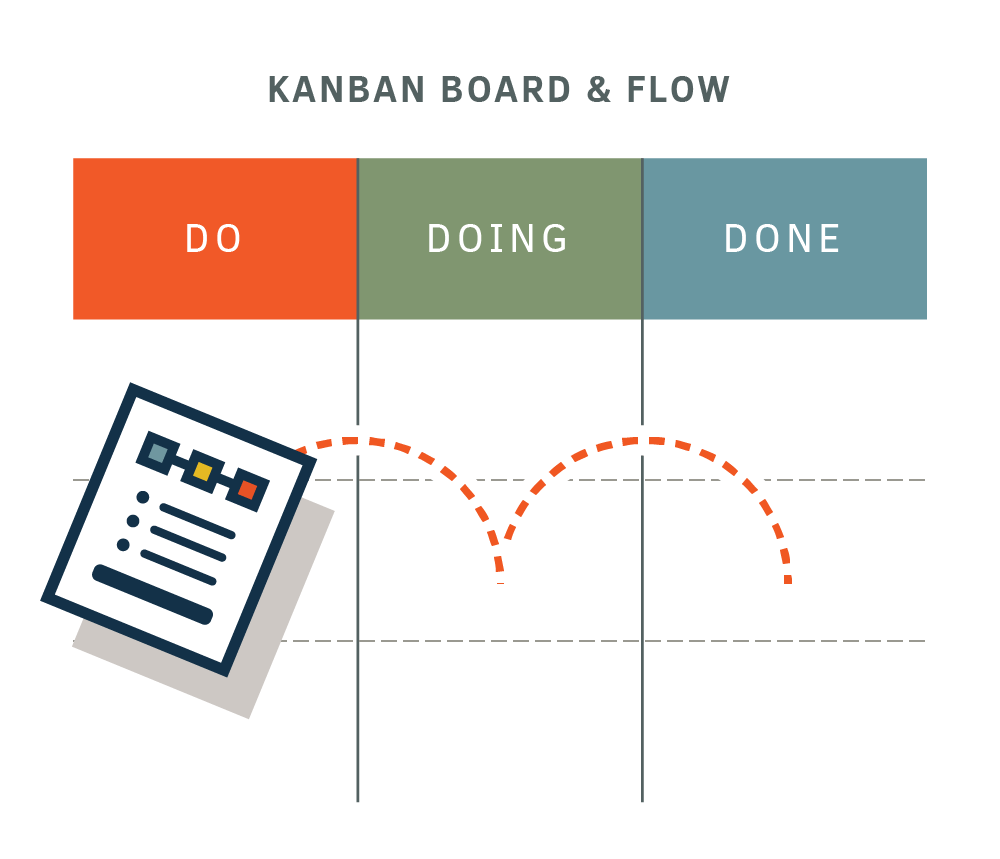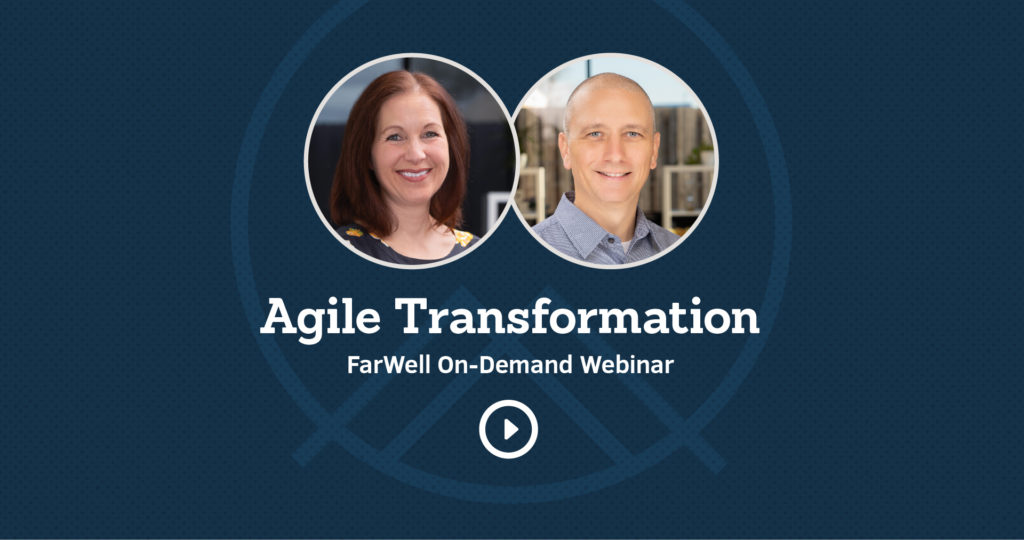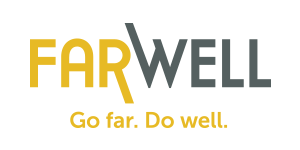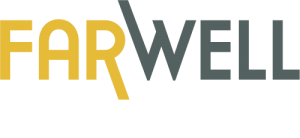Discover advisor articles and other FarWell resources.
Go far. Do well. Call (800) 987-2015
Kanban Your Way to Effective Project Management | How Change Practitioners, Project Managers, and Organizational Leaders Can Use Kanban to Achieve More, Faster

Four Steps to Build and Measure the ROI of Customer Experience (CX) in Your Organization
November 5, 2020
Health Care Management Organization Performs Gap Analysis to Modernize and Mitigate Data Security Risks
January 19, 2021The changes that organizations implement in today’s world are no longer simple. Technology continues to drive innovation and change, resulting in exponential growth in the volume of change efforts organizations are implementing and their complexity. To stay competitive, organizations are investing in digital transformations. These initiatives are typically long, complex, and culturally impactful. According to an IDC study, in 2018, digital transformation spend reached $1.7 trillion—up 42% from the previous year.
Change practitioners, project managers, and business leaders in general can find it difficult to accurately plan and manage these complex, large projects. Plans, scope, and requirements often evolve rapidly in transformational projects requiring alterations and modifications to the organizational change plans that were developed early in the project.
Using a Kanban board to manage your workflow activities on a project is a great solution to overcome some of the challenges of the fast paced, dynamic environment that we work in today.
What is Kanban?
The first Kanban was developed in the 1940’s by Toyota Automotive Company as a scheduling system for lean and just-in-time (JIT) manufacturing. The concept of Kanban has since been adopted by many industries and professions outside of manufacturing as an agile way to manage project tasks using visual boards. Each task or product that must be completed moves through a series of queues on the board until complete. This allows the team to visualize the work that needs to be done and where each task or item is in the process.

Why use Kanban?
A Kanban system is grounded in three key ideas, visual representation of workflow, a pull-based system, and work-in-progress (WIP) limits.
1. Visualize Workflow
The workflow is represented in a visible way which allows the team to see how tasks are moving through the process and provides easy insight to spot bottlenecks while they are forming.
2. Pull-based System
Work moves through the process when a team member is ready and “pulls” a task. This is different from push-based systems where work progresses because someone has finished their part and pushes it to the next team member. Using a pull-based approach to complete tasks reduces burnout from the team as team members only will work in when there is capacity versus work being pushed to them whether they have the capacity or not.
3. Work-In-Progress Limits (WIP)
At each step in the process, only a certain number of tasks or assignments are permitted to be worked on at a time. This differs from other systems that focus on time limits. WIP limits maximize efficiency and improve focus and quality by making sure people aren’t overloaded and pulled in too many different directions.
Kanban is Versatile
Project management teams are often using some variation of Agile methodology. There are four core values in the original Agile Manifesto, the last being “Responding to change over following a plan.” Although Agile methodologies offer many benefits, there are some considerations including training, commitment, and adoption of the new way of working.

Moving to a fully Agile approach to manage your project activities can be a significant change investment in and of itself. If your organization is not quite ready to make the shift to Agile, using Kanban boards within your current methodology can be an effective way to show value and drive further Agile adoption.
Kanban itself is not a project management methodology, but rather a framework for managing activities. It can be used in almost any organizational project management methodology. According to a 2019 Digital Project Manager study, 89% of project professionals said their organizations are using or recently implemented hybrid project management practices.
Business Benefits of using Kanban:
- Improves morale and team communication
- Improves manageability and predictability
- Allows the project team to stay flexible
- Improves productivity and reduces waste
- It is easy to start – little to no change required
- Allows team members to focus
- Focuses on continuous delivery
How to start using Kanban
- Get buy-in from your project team and leadership.
- Choose the right technology.
- Build your boards.
1. Get buy-in from your project team and leadership.
To effectively achieve buy-in, first think about the benefits to team members of using Kanban. Will it be easier for the team to collaborate and communicate? Can they better see what work needs to be completed next and to manage those tasks? Will they be more able to see bottlenecks and pitch in to keep the project moving?
Next, think about what some of the points of resistance might be from team members? As with any change, there will be some resistance and skepticism about using a new approach to managing tasks. Some people may like the old school method of sending an email notifying them of their assignment or having shared access to an excel document with a list of all the tasks and several associated columns with task details. Will there be pushback on having to learn a new tool? Will there be fear that individuals may not be able to perform or that there is more visibility into performance? Will some think that this will be more work?
To address these objections and encourage acceptance, lead with the WIIFM (“What’s In It For Me”) and address the points of resistance up front. If people are worried about learning a new tool, give them a demo to show how easy it is to use and how much of an impact it could have on their productivity and the project’s success.
2. Choose the right technology.
Once you have buy-in from the team it’s important to ensure you are using the right program or system. This step may need to be done before obtaining buy in, especially if demos are required to achieve project team acceptance. However it is worth noting that Kanban can be laid over tools and systems that the team is already using.

Here are some considerations for choosing the right program or system to support the Kanban framework.
Is it easy to use?
Is the tool easy to use and understand? Does it provide a diverse list of functionalities that allows the team to customize it to meet their needs? Are the boards themselves visually appealing and easy to interpret?
Does the technology integrate with your system?
Do you need the tool to integrate into other systems? If so, how easy is it to integrate? Is there a price associated? Can the integration be done by internal teams, or is outside assistance/support required? How long is the integration process?
Does the technology have reporting features to track progress for leadership?
What type of reporting can be done in the system? At a minimum, you will want to have the ability to organize tasks and line-of-sight into productivity by team member and/or project.
Is the technology licensing per user within your budget?
How much are user licenses and how many users will you need? If you have a small team there may be a free version.
As with any selection process there are many factors to consider before selecting a tool. Much of the decision-making will be based on your organization and project needs. If you are planning on using Kanban to only manage your change management tasks, then a simpler solution may suffice.
Five popular software options for Kanban:
*Although Microsoft Planner may not be as robust as some of the other available tools, it can often be the best choice for obtaining quick adoption. Many organizations have Planner included with their Microsoft Office suite, and integrations into company directories may already exist. Additionally, Planner works well with Microsoft Teams for easy collaboration and integration.
3. Build Your Boards
Once you’ve chosen a tool and have obtained buy-in from the team, it’s time to start building your board!
To start building your board, look at your current project plan and begin creating a backlog of known tasks. I recommend doing this with your team to help familiarize them with the process. Once this is complete, prioritize and assign backlogged items into a bucket. Typical buckets include: To Do, In Progress, and Done. You may also want to have a Review bucket. For each task you should add a date, an owner, and any supporting documents and details.

4. Start Using Kanban
You are now ready to begin using Kanban to manage your project tasks. Schedule a kickoff meeting with your team to clarify expectations, determine meeting cadence and structure, answer questions, and build excitement. Be sure to continue working with your team post-kickoff to address any problems, provide additional training, or handle any issues that come up during the process. It is important to continue to support your team after you’ve launched to ensure quick adoption and minimize risks of reverting back to old work methods. Instill in your team continuous improvement is essential to Kanban.
As a change practitioner, project manager, or organizational leader, building an adoption plan which includes, but is not limited to, a sponsorship model, training plan, communication plan, coaching plan, and a resistance management plan is only one piece of the puzzle. Executing the tasks needed to deliver those plans effectively has equal if not greater impact to the overall success of the project. Kanban is a great solution for effectively managing your project tasks.
Want to learn more about how to use Kanban or other methodologies along with best practices in change management to implement an Agile transformation in your organization? Watch FarWell’s Leadership Support Series webinar on Agile Transformation!





